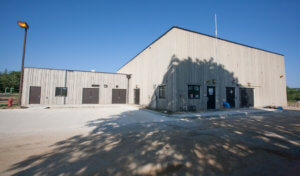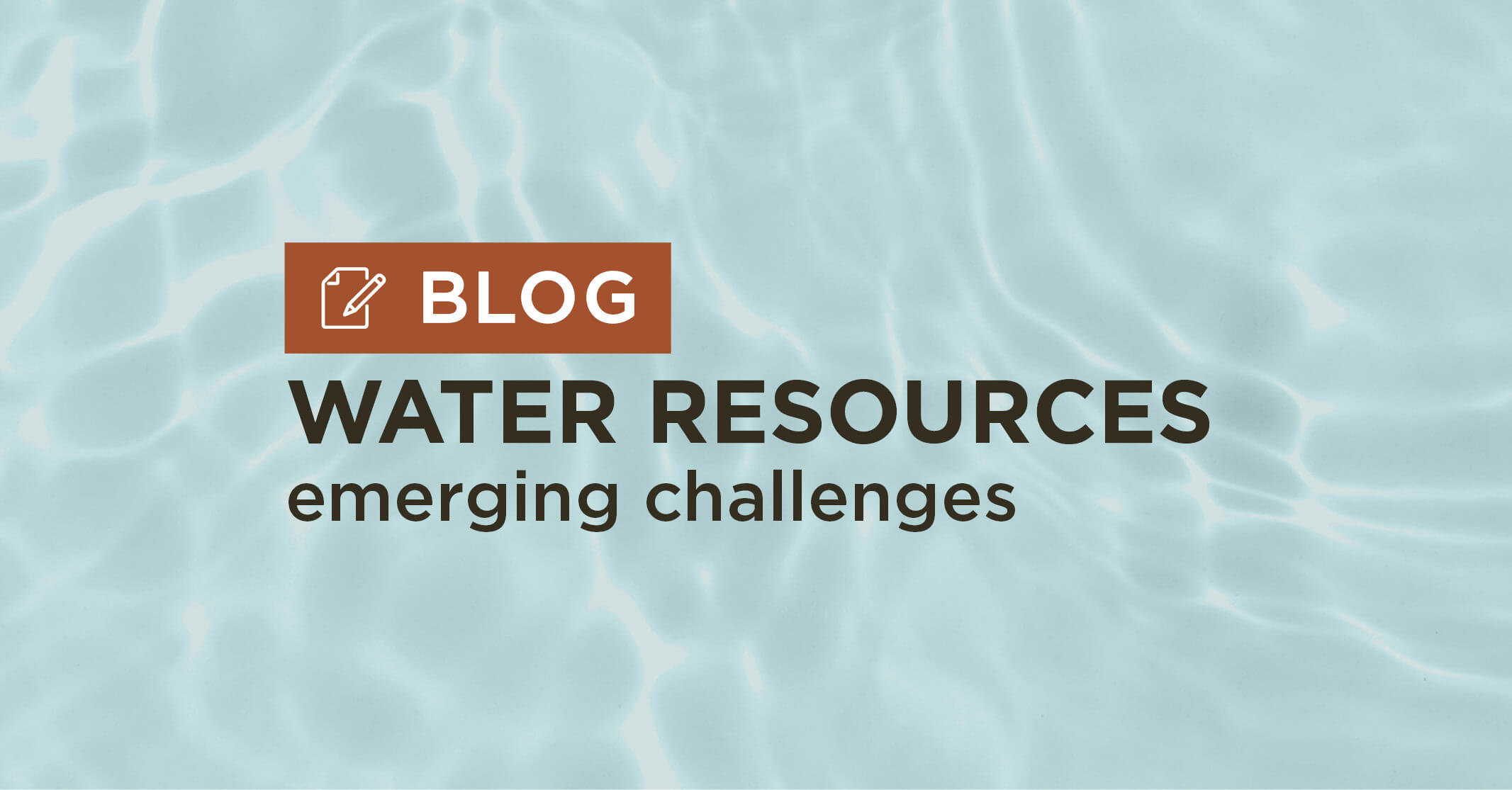Examining the Changing State of Water Resources
The societal demand for clean and affordable water constantly increases, creating a commensurate demand for improved quality and increased efficiency to better manage this finite, natural resource. This is the challenge the Snyder & Associates water resources experts manage daily as they work through our clients’ difficulties — and what could lie ahead.
In addition to the ongoing pressures our client communities are already dealing with, our professionals foresee the water resources industry experiencing several more changes in the coming years. These transformations will impose upon the industry a complex set of challenges that must be addressed and overcome to serve these communities properly. Over the next decade, here are six ongoing and emerging challenges that could profoundly impact the water industry while providing numerous opportunities for improvement.
Navigating Regulatory Complexity Requires Expert Guidance

After finding nitrate levels that exceed the Maximum Contaminate Level (MCL) in a client’s source water, our team conducted thorough studies and worked with the Iowa Department of Natural Resources (DNR) to find a solution.
Municipalities face a complicated policy and regulatory landscape when it comes to managing water resources. In part, this comes from the divide in authority over varying water branches. Water allocation is mainly governed by the states, each with its own regulatory agency and system — and minimal federal intervention. Individual state ordinances and regulatory strategies control specific water uses, such as transfers of water from one watershed to another or groundwater withdrawal.
Water quality, on the other hand, is governed by federal law, primarily through the Environmental Protection Agency’s (EPA) Clean Water Act. The EPA sets legal limits on over 90 contaminants in drinking water, setting a high bar for gaining project permits and approvals.
“Given our experience with permitting processes and our long-term relationships with regulatory staff, we can efficiently permit the most complicated of projects,” explains Jeff Walters, PWS Snyder & Associates’ Environmental Sciences Group Leader. Our environmental team regularly works with communities of all sizes, state environmental protection and management agencies, and the United States Army Corps of Engineers (USACE) and understands what is needed to ensure your project is properly permitted and ready for construction.
Aging Infrastructure Hinders Water Quality & Service
Many communities rely on water infrastructure that has been in place for decades, leaving them more susceptible to water loss, service interruptions, and, ultimately, system collapse. Many communities are replacing or modernizing their systems to extend their water and wastewater pipe lifespan. These upgrades often start with a comprehensive study and a master plan.
Comprehensive studies of service areas and treatment plants examine a water or wastewater system. “A system evaluation is the first step of proactive maintenance and repair,” states Darin Jacobs, the Snyder & Associates’ Water Resources Group Leader. These studies help determine system needs and plans for community-wide improvements to coincide with growth, water quality regulations, efficiency standards, and aging infrastructure.

Construction workers drill holes into the SBR wastewater effluent flow equalization tank to install pump discharge piping.
Another recommended focus area is a new technology, such as acoustic monitoring or pressure management. These tools provide a minimally invasive glimpse of what is below the surface, and help identify pipe deficiencies before they lead to more significant and expensive problems. With decades in the business, Darin and his group have the knowledge and expertise to help discover system flaws and provide right-sized mitigation options. Whether an existing approach needs upgrades or an entirely new treatment or conveyance system needs to be implemented, the Snyder & Associates team can help determine the right solution.
Expert Guidance Assists with Obtaining Funding
Most communities are hesitant to raise their utility rate or taxes to cover new infrastructure or system costs, leaving them unable to make improvements without obtaining outside funding. While the federal government is actively addressing the need for infrastructure funds, it’s clear that the old saying “out of sight, out of mind” has an impact, as more highly visible roads and bridges often take precedence. Water and wastewater system assets are typically buried, hidden from the public eye, making the competition for dollars challenging. Nevertheless, procurement of funding is a necessary and critical step to ensure a project has the required resources for success.
This scenario makes exploring potential resources, partnerships, and non-traditional funding possibilities vital, as these avenues may create more access to capital. However, understanding the available funding options can be daunting and overwhelming for many small communities and organizations. The professionals at Snyder & Associates are well-versed in navigating the numerous funding programs available and finding the right plans for each project type.
Water Conservation Key to Long-Term Success
Although water is one of our most abundant resources, there is often not enough high-quality water in the right place and time to satisfy demand. With droughts and water shortages continuing to strain our systems, the threat of water scarcity is ever looming.
As a country, we’ve progressed in addressing key water conservation challenges as many communities are working toward becoming green, sustainable, smart cities. Solutions like energy-efficient, low-flow appliances can decrease demand from water treatment facilities, and artificial wetlands can ease burdens on city stormwater systems and minimize potable water use.
Moving forward, comprehensive water supply plans are becoming increasingly important. These documents help communities chart future development courses by evaluating conservation efforts and determining where efficiencies can be developed. At Snyder & Associates, we work collaboratively with our clients to understand their current conditions, challenges, and goals. We then integrate this information with our assessments to produce actionable recommendations that help communities shape a resilient future.
Looming Climate Change Disruptions

Permeable pavers promote stormwater infiltration to enhance water quality and replenish underground water reservoirs
Climate change increasingly disrupts each step of the water cycle by influencing when, where, and how much precipitation falls. These shifts will likely affect the magnitude and frequency of extreme weather events, water availability, and drought severity in the coming years.
Because of uncertainties about precipitation changes, they are predicting specific regional impacts can be difficult. Still, some mitigation efforts can be identified and implemented to reduce the effects. Cities and communities worldwide work to build flood defenses, install water-permeable pavements to better manage floods and stormwater, plan for heatwaves and higher temperatures, promote increased water storage and ensure crops are appropriate for the local climate. Our water experts stand at the cutting edge of the available new tools that can be used to combat the impact of an ever-changing climate.
Growing Urban Demand Saps Resources

Subdivision growth around Wildflower Pond, one of Snyder & Associates’ former projects, has increased dramatically in recent years.
While the water supply in some areas of the country has decreased due to climate change, water demand shows no signs of slowing down as population increases continue. In communities experiencing rapid urbanization, an imbalance between water supply and demand can quickly become an issue, leading to a higher likelihood of shortages.
Typically, urban water scarcity has been addressed through modern engineering efforts and upgraded infrastructure. Our experts lend a hand to this initiative by designing the most efficient systems possible for our clients. These potential solutions include groundwater exploitation, increased reservoir water storage, improved water-treatment capacity and efficiency, and more strategic urban landscape planning.
Moving Towards a Sustainable Future
Although we can’t definitively predict which direction the water industry will take over the coming years, we know it’s facing a broad scale of issues, with the topics discussed here just touching the surface. However, by emphasizing these challenges (and potential opportunities), we hope to spur conversations surrounding the future scenarios impacting the water industry and how the Snyder & Associates team can help.

